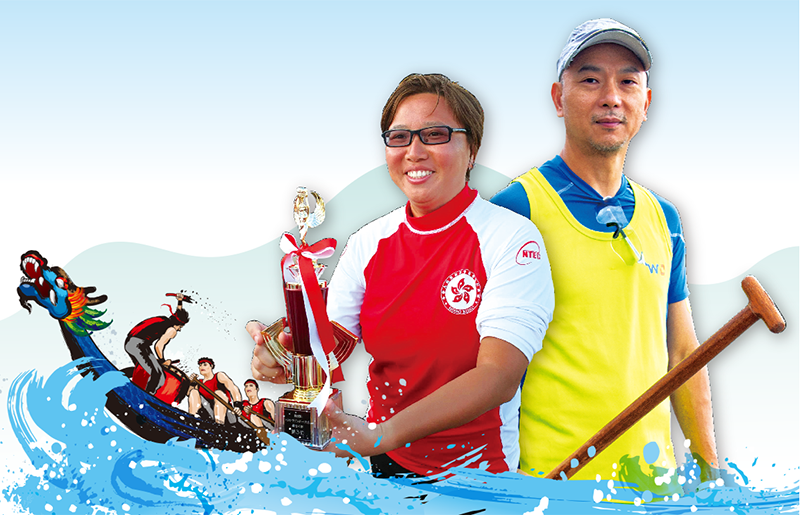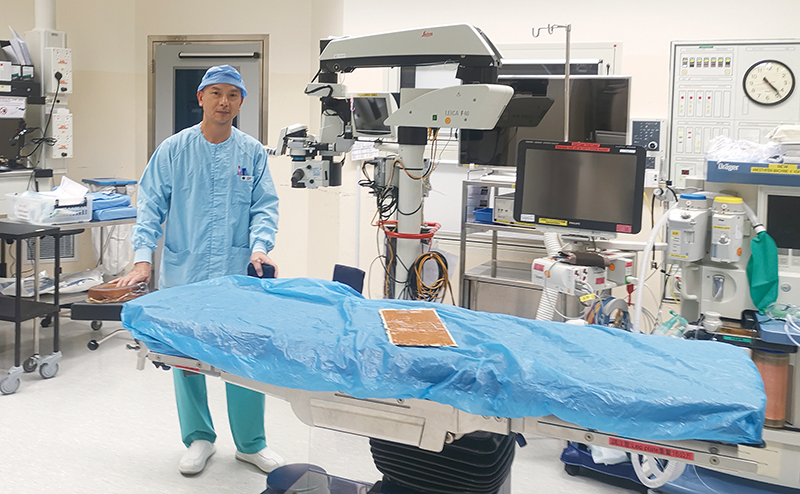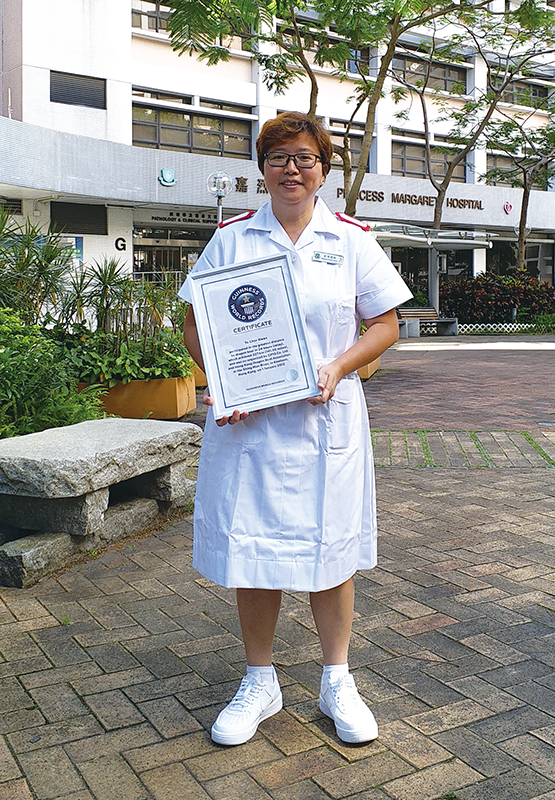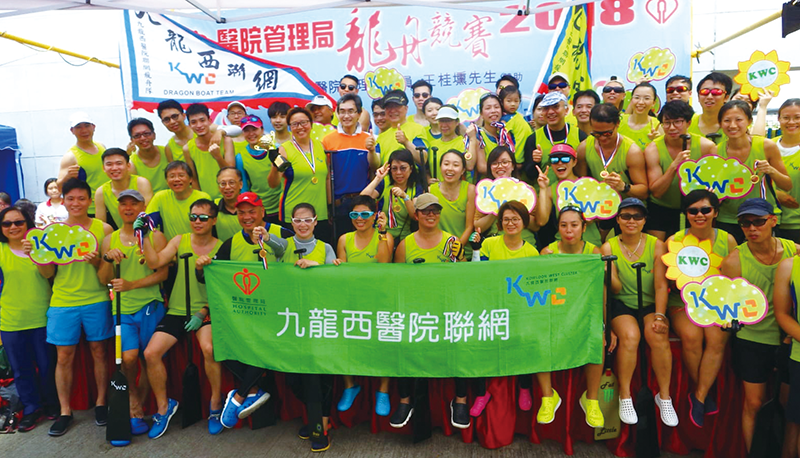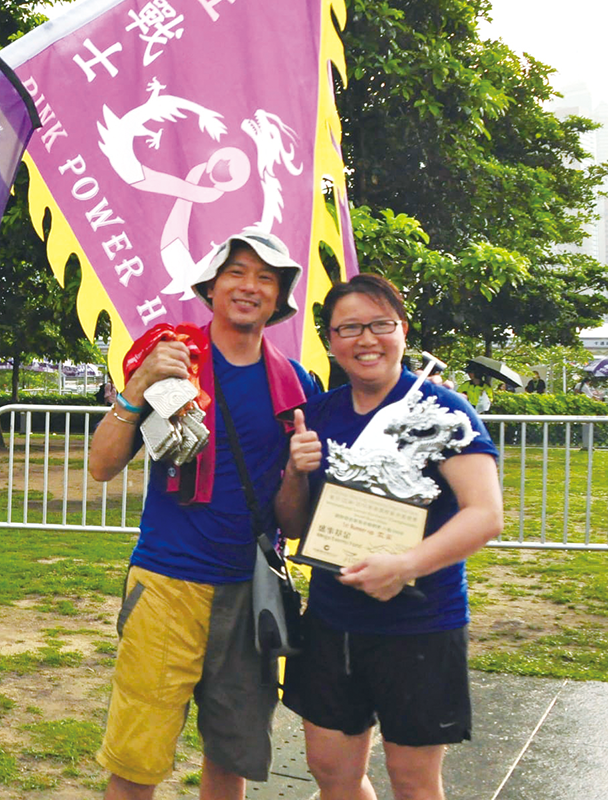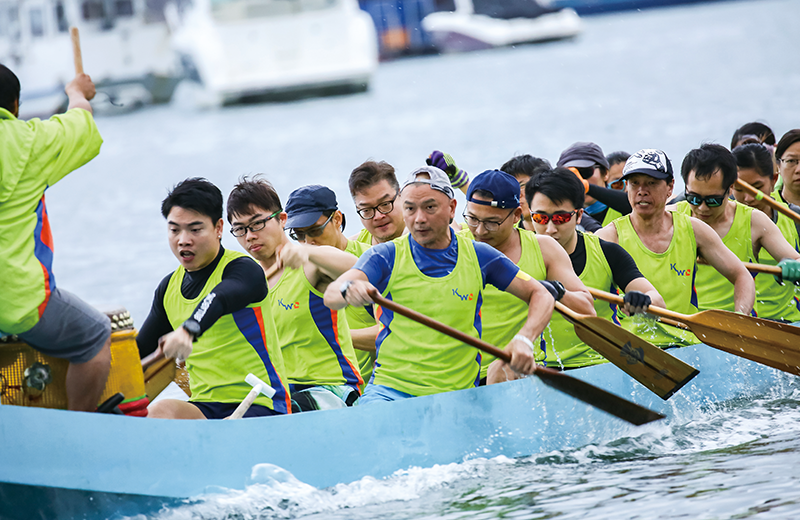KWC dragon boat racers paddle their way to international glory
Kowloon West Cluster (KWC) Dragon Boat Team has won the recent two overall championships of HA inter-cluster dragon boat games and gained international recognition, attributed to two intrepid racers of the team – To Chor-kwan, Advanced Practice Nurse of Paediatrics Intensive Care Unit at the Princess Margaret Hospital, and Samuel Ng, Patient Care Assistant at the Caritas Medical Centre.
Apart from racing alongside their HA colleagues, Chor-kwan and Samuel have made their mark with like-minded friends in international competitions.
Being once a member of the Hong Kong Dragon Boat National Team, Chor-kwan has twice set Guinness World Records with her teammates by paddling the longest distance in a 24-hour relay. The duo has also competed in Hong Kong, Canada, Hungary, Japan, Korea, and Malaysia and was second runner-up (500m) in the Hong Kong International Dragon Boat Regatta, champion in the Kwun Tong Small Dragon Boat Race, first runner-up (100m) in the Penang International Dragon Boat Festival, champion (200m) in the Concord Pacific Dragon Boat Festival in Vancouver, and first runner-up (500m) in the Korea Open Busan International Dragon Boat contest.
Chor-kwan says, “Dragon boat racing isn’t a sport that requires just you being at peak fitness. It musters all the strength and willpower of your team to synchronise their strokes so as to move forward together.” Samuel explains, “If you don’t synchronise with your teammates, it affects the speed of the boat. To avoid it, a paddler has to be determined and must overcome fatigue.”
Despite working shifts, the two dragon boat racers manage to practise three to five times a week. Chor-kwan says her most memorable race was at the Hong Kong International Dragon Boat Regatta 2012 where her amateur team was the first runner-up in the local women’s league and had the chance to compete with the Chinese national team and other international teams. For Samuel, the most unforgettable moment was an incident during a race, “We were almost at the finishing line when another dragon boat bumped into us and our boat sank. We had to climb aboard a boat sent by the organiser to get back to shore,” he recalls.
Away from the water, Chor-kwan and Samuel are dedicated healthcare workers who say the love of dragon boat racing helps them in their work. Chor-kwan gains insight on leadership from her past dragon boat racing coach. She has learned that a good leader can gain the trust and respect of a team by understanding the strengths of each team member and assigning them roles that bring out their best. Meanwhile, Samuel encourages patients through the optimistic outlook on life dragon boat racing has given him. “You can win any race if you work hard,” he says. “The same philosophy applies to one’s journey to recovery. Being in the same boat, if patients and their family can row with us in the same direction at the same pace, we can reach the finishing line of recovery sooner.”
Q&A
1. What are the different types of dragon boat races?
Long-distance races cover 21.1 kilometres and 5 kilometres. Short-distance races range from 100 metres to 300 metres. A standard dragon boat has 20 paddlers at most while a small dragon boat has a crew of 10 at most. Crews can be all-men, all-women, or mixed.
2. What are the differences in training for long and short-distance races?
Long and short-distance races require different rhythms and paddle movement patterns. For short races, training focuses on the crew’s concentration and power. For long races, training focuses on the crew’s endurance, rhythms, paddling arrangement and strategy.
3. What are the different roles of crew members?
A crew includes a coach, team leaders, a drummer, a steerer, and paddlers. The coach is responsible for training the team, arranging paddlers for preliminary and final rounds of races, creating a spirit of teamwork, and helping crew members learn from experiences in different competitions. Team leaders plan activities around the year, recruit new members, choose races of suitable level, and set targets for the team. A drummer leads the paddlers throughout a race using a rhythmic drum beat. The steerer stands in the back of the boat and controls its direction. The number of paddlers depends on the size of the dragon boat.
● Entering the virtual world in HA
COVER STORY
● Virtual reality opens new horizon in healthcare
● Rehab as you play: motorcycle driving simulation system
● Rehab as you play: cooking assessment and training
● Practice makes perfect, patient safety enhanced
● Experiential learning fosters public awareness of mental health
PEOPLE
● KWC dragon boat racers paddle their way to international glory
HELEN HA
● Better communication to fight winter service surge
● Exercise in neighbourhood parks with Rehab Anywhere!
WHAT'S NEW
● Run Green@0303 New Year Run 2019
● One stitch at a time: show patients you care
● From self-worth to contribution
● Brainpower expert advocates primary care
● PMH Day Chemotherapy Centre takes on a new look
FEATURE
● My weight loss journal: case 1
● My weight loss journal: case 2
● Learn from dietitians: eat healthy
STAFF CORNER

